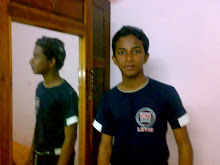DNA is short for deoxyribonucleic acid. Two chains of four chemical bases (abbreviated A, T, C and G) make up DNA and act as a cell’s recipe book to make proteins. The particular sequence of a DNA chain – meaning the precise order of the four chemical bases – determines what protein will be made. A DNA segment beginning with ATTCGC would produce a very different protein than one that starts with CCGTAT. This can be likened to adjusting the order of letters in a word. Though the letters are the same, the meaning changes. For example, act means something very different than cat.
Not all DNA is destined to become a protein. Just as a recipe might contain more information than just a list of ingredients, only some regions of your DNA – called genes – are directly translated into proteins. Cellular machinery follows the instructions written in a gene’s recipe to create a corresponding sequence of messenger ribonucleic acid (mRNA), which is chemically similar to DNA but acts as a messenger, carrying the recipe from the nucleus. Out in the cell’s cytosol, the mRNA sequence is read by more machines, called ribosomes. Following the mRNA instructions, ribosomes string together amino acids, the building blocks that make up proteins. Proteins do most of the work in the cell.
As cells divide, producing two cells where there was once only one, the parent cell’s DNA is duplicated and the same protein-making recipe is passed on to the daughter cell.
Learn more:
Proteins 101
Nuclear Receptors 101
Mitochondria 101
Stem Cells 101
The word "computer" is somewhat misleading in this context, as most people think of a computer today as a machine that can generate word processing,
leonard Adleman, one of the pioneers of the DNA computer, reports that a single gram of dried DNA is capable of storing the same amount of information as could fit on one trillion CDs. This, along with the benefits of parallel processing and the negligible power required, guarantee that the DNA computer,
Saturday, December 25, 2010
Subscribe to:
Post Comments (Atom)




 image of dna computer
image of dna computer




















0 comments:
Post a Comment